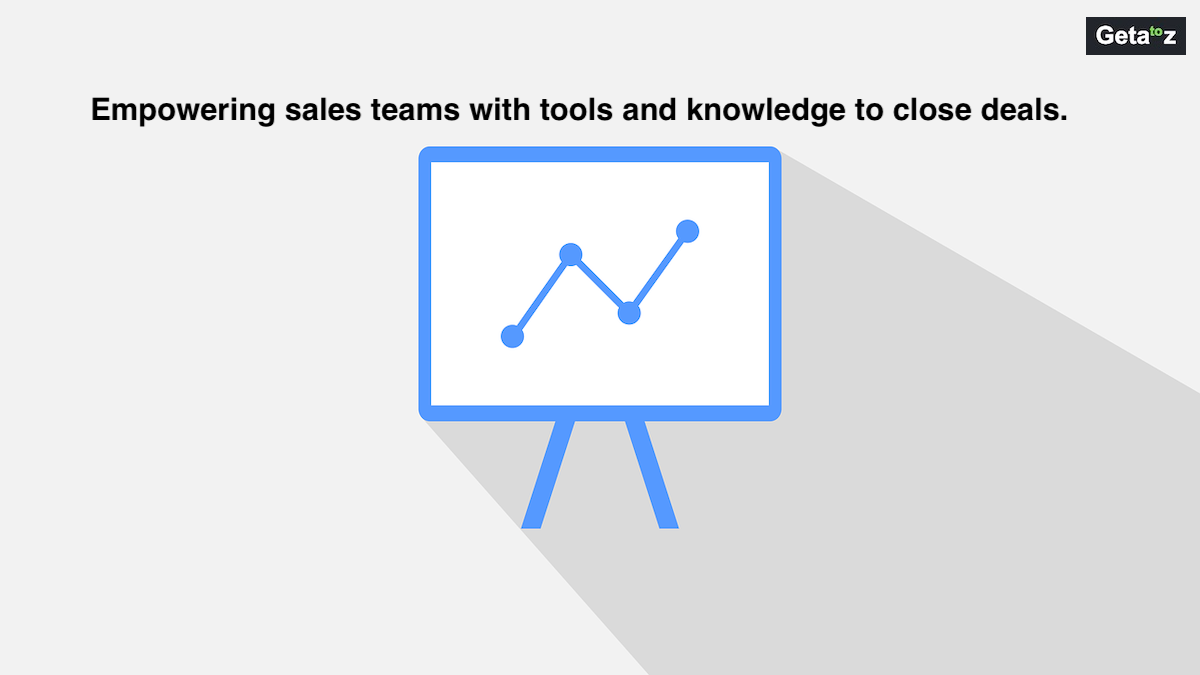Boost Your Sales Team's Success with Effective Sales Enablement
Updated: June 15, 2024

What is it?
Sales enablement is the process of providing resources that your sales team need - such as content, tools, knowledge, and information - to effectively close deals and sell your product or service to customers.
Understanding Sales Enablement
Sales enablement is a process that helps sales teams work better by providing them with the tools and information they need. This process is a team effort between the marketing and sales departments. Marketing creates valuable resources like videos, blogs, and product guides. These materials help sales representatives when they talk to potential customers. By sharing this information, sales reps can help customers decide whether to buy a product.
The sales team can tell the marketing team what materials they need. This feedback is essential because it helps marketing create new resources that make it easier for sales reps to connect with customers and sell more effectively.
Sales enablement also includes other essential parts like coaching and technology. For example, a Customer Relationship Management (CRM) system can be used to make sure everyone in the organization has access to the latest materials. This technology helps sales enablement fit smoothly into the daily work of sales reps and managers.
Why is Sales Enablement critical?
Sales enablement is very important because it helps salespeople focus on what matters most for their job. It saves them time on unnecessary conversations with customers, managers, and support teams. When salespeople get the right help, it can help the company. They might not sell well if their training is wrong, the information they use is old, or the strategy is unclear.
With sales enablement, the sales team can learn about the products, their value, and the best ways to sell them, which helps them do better in their jobs and grow the business. It also makes them more believable to customers, which helps build and strengthen relationships over time.
Leaders ensure that training and other activities fit into a big plan, making it easier for everyone to understand the sales goals. Sales enablement also helps the team meet buyers' wants by giving them the tools and information they need to help customers make buying decisions. It makes creating and updating marketing materials for new products and campaigns easy, and they can be shared anytime and anywhere using digital technology.
How to Create a Sales Enablement Strategy?
A sales enablement strategy is your business's plan to give your sales team the tools and resources they need to sell effectively. This strategy should meet the specific needs of your sales team so they can reach your target audience and close more deals. To create your plan, think about these important points:
Goal Setting: Goals should align with your broader business objectives, supporting specific product, sales, and business goals. Proper goal setting helps sales representatives develop new skills and enhances their career growth.
Clear Communication: Leaders should tell salespeople what they must do in training classes, self-learning, and other activities. Clear communication ensures everyone knows what to expect before, during, and after each training event.
Managing Time: Good enablement programs balance learning with ongoing work. Avoid overwhelming your sales teams with too many schedules that could disrupt enablement activities aimed at achieving long-term goals.
Content Creation: Marketing and sales should collaborate on content creation for successful sales enablement. Collect all materials in one place, find any gaps or overlaps, and organize existing content. A sales content management system can help manage content and plan new strategies. Digital storage makes it easy to share and reuse content when needed.
Reporting and Analysis: Use standard sales reports to get valuable insights from business data. Sales process reviews can show areas for improvement, and lead scoring systems can help prioritize the most promising leads.
Optimizing Sales Content: Ensure your content is compelling and takes little time away from selling. Organize sales content, create case studies, and develop email templates for personalized communication.
Technology and Automation: Automate manual processes to help sales representatives sell better and faster. Create email sequences, automate prospecting, implement direct messaging, and use sales enablement software to manage all materials and content from a central location.
Empower Your Sales Team: Empower your sales team with the right resources, materials, and tools to sell more effectively and efficiently. Direct communication between sales and marketing teams is essential.
Digital Transformation: Use digital technology to improve your enablement efforts, from content creation and distribution to virtual training sessions. Ensure technology helps share information and encourages teamwork across the organization.
To summarize, successful sales enablement is a collaborative effort across sales, marketing, and other key teams. Creating a dynamic, well-documented enablement plan and involving stakeholders at all levels ensures widespread adoption and enthusiasm. Equip your team with the right resources and foster a culture of continuous learning and improvement. Doing so empowers your salespeople to perform at their best and drive your business forward. Start transforming your sales approach today and watch your team's success soar.